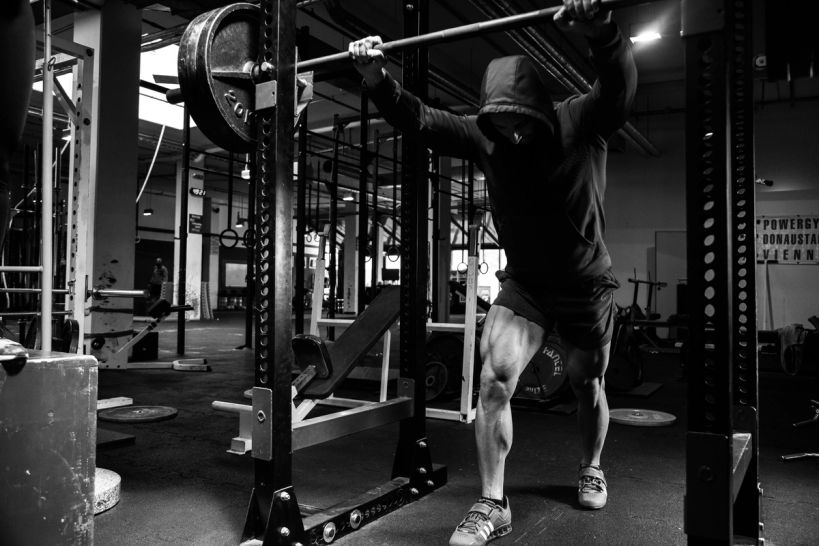Reverse Diet To Lean Bulk - Macros Included
Introduction to Reverse Dieting
Welcome, fitness enthusiasts! Today, we embark on an exciting journey into the world of reverse dieting - a powerful strategy that can help you achieve your lean bulking goals. But before we dive into the nitty-gritty details, let's first understand what reverse dieting actually means.
Definition and Purpose of Reverse Dieting
Reverse dieting is a methodical approach to gradually increasing calorie intake after a period of caloric restriction or weight loss. Unlike traditional diets that focus on cutting calories for fat loss, reverse dieting takes a different route by incrementally raising your daily calorie intake over time. This gradual increase allows your metabolism to adapt and reset, ultimately leading to improved body composition and enhanced muscle growth. Essentially, it's about giving your body the opportunity to rebuild and thrive. The primary purpose of reverse dieting is twofold: metabolic recovery and lean bulking. After prolonged periods of calorie restriction, our bodies adapt by slowing down our metabolism in an effort to conserve energy. This adaptive response can hinder further fat loss efforts or make it difficult to maintain weight loss results in the long run. By gradually increasing calorie intake through reverse dieting, we allow our metabolic rate to readjust and return to optimal levels. This not only prevents unnecessary weight gain but also sets the stage for lean bulking – building muscle while minimizing fat gain.
Benefits of Reverse Dieting for Lean Bulking
Now that we've established what reverse dieting entails let's explore its remarkable benefits for those striving towards their lean bulking goals:
- Metabolic Revival: During periods of caloric deficit, our metabolism may slow down as a survival mechanism. Reverse dieting acts as a reset button, restoring your metabolism to its former glory and reviving its efficiency.
- Preserving Muscles: Often, when aiming for fat loss, we inevitably sacrifice some muscle mass along the way. Reverse dieting mitigates this issue by providing the necessary nutrients and energy to support muscle maintenance and growth.
- Mental and Physical Health: Sustained calorie restriction can take a toll on our mental well-being. Reverse dieting allows us to escape the shackles of constant deprivation and experience a more balanced approach to nutrition, promoting overall mental and physical health.
- Hormonal Balance: Extended periods of low-calorie diets can disrupt hormonal balance in our bodies. By gradually increasing calorie intake through reverse dieting, we create an environment conducive to hormonal equilibrium, optimizing muscle gain and recovery.
- Sustainable Lifestyle: Unlike crash diets or extreme measures that are hard to maintain long-term, reverse dieting fosters a sustainable lifestyle rooted in gradual changes that are easier to adhere to. This means you can continue embracing healthy habits while progressing towards your lean bulking goals.
Now that we're well-versed in the foundations of reverse dieting and its benefits for lean bulking let's delve deeper into the role of macronutrients – protein, carbohydrates, and fats – in achieving successful results!
Understanding Macros for Lean Bulking
Brief Overview of Macronutrients
When it comes to lean bulking, understanding macronutrients is crucial. Macronutrients, commonly referred to as "macros," are the three major nutrients that provide energy: protein, carbohydrates, and fats. Each macro plays a unique role in fueling our bodies and supporting muscle growth.
Protein:
Protein is often hailed as the superstar among the macros for lean bulking. It consists of amino acids, which are the building blocks of muscle tissue. Protein helps repair damaged muscles after intense workouts and promotes muscle protein synthesis (MPS), leading to muscle growth. Great sources of protein include lean meats like chicken breast and turkey, fish such as salmon or tuna, tofu for plant-based options, and legumes like lentils or chickpeas. Aim for approximately 0.8-1 gram of protein per pound of body weight daily to provide your muscles with an adequate supply for growth.
Carbohydrates:
Carbohydrates are your body's primary source of energy during physical activity. They are broken down into glucose, which fuels both your brain and muscles. Consuming sufficient carbohydrates ensures you have enough energy to power through intense workouts while preserving muscle mass. Complex carbohydrates found in whole grains like quinoa or brown rice, fruits such as bananas or berries, and vegetables like sweet potatoes or broccoli are excellent choices for lean bulking. These provide sustained energy release due to their fiber content compared to simple sugars found in processed foods.
Fats:
Contrary to popular belief, dietary fats play a vital role in supporting overall health and lean bulking efforts. They help regulate hormone production necessary for muscle growth and aid in absorption of fat-soluble vitamins such as A,D,E,K. Include healthy fats in your diet by consuming avocados, nuts like almonds or walnuts, seeds such as chia or flaxseeds, and cooking with oils like olive oil. While fat intake depends on individual preferences and goals, aim for a moderate amount to maintain hormonal balance and support optimal bodily functions.
Importance of Tracking Macros for Successful Lean Bulking
Tracking macros is an essential aspect of lean bulking as it provides the necessary precision to achieve desired results. When you track your macros, you gain a clear understanding of how much protein, carbohydrates, and fats you are consuming daily. This knowledge allows you to make adjustments based on your progress and ensure you are supplying your body with the nutrients it needs for muscle growth without excessive fat gain. By tracking macros consistently, you create a structured approach towards managing your nutrition. It enables you to fine-tune your diet by making adjustments in specific macros when needed. For example, if progress stalls or muscle gains are slow, increasing protein intake while moderating carbohydrate and fat ratios can help stimulate muscle growth. Furthermore, tracking macros helps prevent potential overeating or undereating scenarios that can hinder lean bulking progress. It provides accountability and awareness regarding portion sizes and ensures that each macronutrient is adequately balanced throughout the day. Remember that everyone's macro requirements differ based on factors like weight, activity level, metabolism, and individual goals. Thus, tracking macros allows for personalized meal planning tailored to meet one's specific needs effectively.
Determining Initial Macros for Reverse Dieting
Calculating Baseline Maintenance Calories
When embarking on a reverse diet for lean bulking, it is crucial to start with an accurate estimation of your baseline maintenance calories. This refers to the number of calories required to maintain your current weight without gaining or losing any pounds. To determine this, you can use online calculators that take into account factors such as age, gender, weight, height, and activity level. These calculators provide a good starting point but remember that they are just estimates and may require some adjustments along the way.
Setting Protein Intake Based on Body Weight and Activity Level
Protein is the cornerstone of any lean bulking plan as it provides essential amino acids that support muscle growth and repair. When determining your protein intake for reverse dieting, consider both your body weight and activity level. As a general guideline, aim for around 0.8-1 gram of protein per pound of body weight. However, if you engage in intense physical activities or resistance training regularly, you may want to increase this amount slightly to promote optimal muscle recovery.
Adjusting Carbohydrate and Fat Ratios for Individual Goals
The next step in determining your initial macros for reverse dieting is adjusting carbohydrate and fat ratios based on your individual goals. It's important to note that these ratios can vary depending on personal preferences and dietary needs. If you prefer a higher-carb approach, you can allocate a larger portion of your daily calorie intake towards carbohydrates while keeping fat intake moderate. On the other hand, if you feel better with higher fat intake or follow a specific dietary plan like keto or low carb, you can adjust your macros accordingly by allocating more calories towards fats. Finding the ideal balance between carbohydrates and fats may require some trial and error until you discover what works best for your body and goals. It's always a good idea to consult with a registered dietitian or nutritionist who can provide personalized guidance based on your specific needs.
Tracking and Adjusting Macros
Once you have determined your initial macros for reverse dieting, it's essential to track your food intake diligently. This can be done using various smartphone apps or even old-fashioned pen and paper. Keep in mind that accuracy is key here, so be sure to measure portion sizes and read food labels carefully. As you progress through the reverse diet, it's important to monitor your weight changes and make adjustments to your macros as needed. If you notice that you are gaining weight too quickly, it may be necessary to slightly reduce calorie intake by adjusting carbohydrates or fats. On the other hand, if you're not gaining weight at the desired pace, consider gradually increasing calorie intake by adding more carbohydrates or fats into your daily plan. Remember that the process of determining initial macros for reverse dieting is not set in stone. It requires patience, self-awareness, and a willingness to adapt as you observe how your body responds. By fine-tuning these macronutrient ratios over time, you'll find the sweet spot that allows you to effectively lean bulk while minimizing any unwanted fat gain along the way.
Implementing the Reverse Diet Plan
Gradually increasing calorie intake to avoid fat gain
When it comes to implementing a reverse diet plan for lean bulking, the key is to be patient and gradually increase your calorie intake. This gradual increase will help prevent excessive fat gain while still fueling muscle growth. It's important to strike a balance between providing your body with enough energy to build muscle and avoiding an excessive surplus that leads to unwanted fat accumulation. Instead of jumping straight into a high-calorie diet, start by increasing your daily caloric intake by around 100-200 calories per week. This gradual approach allows your body to adapt and minimizes the risk of gaining excess fat. While it may feel tempting to go all-in and consume significantly more calories right away, remember that slow and steady wins the race when it comes to lean bulking.
Weekly calorie surplus progression guidelines
To ensure effective lean bulking through a reverse diet plan, it's essential to have some guidelines in place for weekly calorie surplus progression. A general rule of thumb is aiming for a surplus of 250-500 calories per day above maintenance levels. In practical terms, this means adding an extra 1750-3500 calories per week. However, keep in mind that these numbers can vary depending on individual factors such as metabolic rate and activity level. It's always best to listen to your body and make adjustments accordingly.
Monitoring weight changes and adjusting macros accordingly
Throughout the reverse dieting process, closely monitoring your weight changes is crucial for determining the effectiveness of your lean bulking approach. Aiming for a gradual weight gain of around 0.5-1 pound per week is considered ideal for minimizing fat gain while maximizing muscle growth. If you notice that you're gaining weight too rapidly or not seeing any gains at all, it may be necessary to adjust your macros. For instance, if you're gaining weight too quickly, you can slightly reduce your calorie surplus by decreasing your calorie intake. On the other hand, if you're not making progress, increasing your calorie surplus or adjusting macronutrient ratios might be necessary. Remember that each person's body is unique and will respond differently to various approaches. Regularly tracking and assessing your progress will allow you to make informed decisions about adjusting your macros for optimal lean bulking results. Implementing a reverse diet plan for lean bulking requires gradually increasing calorie intake to avoid excessive fat gain. Following weekly calorie surplus progression guidelines and closely monitoring weight changes is essential for ensuring effective muscle growth while minimizing unwanted fat accumulation. By being patient, listening to your body, and making adjustments as needed, you can achieve the desired lean bulk physique without compromising on overall health and aesthetics.
Meal Planning Tips for Lean Bulking
Choosing Nutrient-Dense Foods to Support Muscle Growth
When it comes to lean bulking, selecting the right foods is crucial. You want to focus on nutrient-dense options that provide your body with the necessary building blocks for muscle growth. These foods should be rich in protein, complex carbohydrates, and healthy fats.
High-Protein Sources: Lean Meats, Fish, Tofu, Legumes
Protein is the cornerstone of any lean bulk meal plan. It aids in muscle repair and growth, so it's essential to include ample amounts in your diet. Opt for lean meats such as chicken breast and turkey that are low in fat but high in protein. Fish like salmon and tuna are excellent choices as they contain omega-3 fatty acids that support overall health. If you follow a vegetarian or vegan diet, fear not! There are plenty of plant-based protein sources available. Tofu is a fantastic option that can be marinated and cooked in various ways for added flavor. Legumes such as lentils, chickpeas, and black beans also pack a protein punch while providing additional fiber.
Complex Carbohydrates: Whole Grains, Fruits, Vegetables
Carbohydrates are essential for fueling your workouts and replenishing glycogen stores in muscles. However, not all carbs are created equal when it comes to lean bulking. Focus on complex carbohydrates that offer sustained energy release and valuable nutrients. Whole grains like quinoa, brown rice, and oats should be staples in your meal plan. They provide a good dose of fiber along with essential vitamins and minerals. Don't forget about fruits and vegetables either! These colorful powerhouses offer an array of antioxidants while supplying you with quality carbohydrates.
Healthy Fats: Avocados, Nuts, Seeds, Olive Oil
Although fat has received a bad reputation in the past, it's a crucial component of a well-rounded meal plan. Healthy fats play vital roles in hormone production and absorption of fat-soluble vitamins. Incorporating sources like avocados, nuts (almonds, walnuts), and seeds (chia seeds, flaxseeds) into your diet can provide these essential fats. Cooking with olive oil is an excellent way to add healthy fats to your meals while enhancing flavors. Remember to consume fats in moderation as they are more calorically dense compared to protein and carbohydrates. By incorporating these nutrient-dense foods into your meal plan consistently, you'll provide your body with the necessary fuel for muscle growth while maintaining overall health. A balanced approach that combines protein-rich sources, complex carbohydrates, and healthy fats will set you on the path to successful lean bulking.
Tracking Progress and Adjustments
Importance of regular body measurements (weight, body fat percentage)
Tracking your progress is crucial when it comes to reverse dieting for lean bulking. It allows you to assess the effectiveness of your approach and make necessary adjustments along the way. One fundamental way to track progress is by taking regular body measurements, which includes monitoring your weight and body fat percentage. Weight measurement provides a general indication of changes in your overall mass. It's important to note that weight alone cannot differentiate between muscle gain and fat gain. That's why it's essential to combine weight measurement with tracking body fat percentage. Body fat percentage helps you understand whether the changes on the scale are a result of increased muscle mass or an accumulation of unwanted fat. To measure your weight accurately, use a reliable scale and weigh yourself under consistent conditions, preferably first thing in the morning after using the bathroom. To assess your body fat percentage, consider using methods like skinfold calipers or bioelectrical impedance devices. These tools might not provide absolute accuracy but can give you a relative measure of changes over time.
Evaluating muscle gain versus fat gain
When engaging in reverse dieting for lean bulking, it's crucial to evaluate whether your efforts are resulting in desirable muscle gains rather than excessive fat accumulation. Evaluating this requires paying attention not only to visual changes but also considering objective measures like strength progression and endurance levels during workouts. Visual assessment involves analyzing how your physique is evolving throughout the process. Look for signs such as increased muscular definition, fuller muscles, and improved overall shape. Take progress photos at regular intervals to compare with previous ones. Monitoring strength progression is another excellent indicator of muscle gain versus fat gain during reverse dieting. If you find yourself consistently getting stronger – increasing weights lifted or performing more repetitions – it suggests that your training and nutrition protocols are favoring muscle growth. On the other hand, if your strength levels remain stagnant or decrease, it might indicate that adjustments are needed in your macros or training routine.
Making necessary adjustments to macros based on progress
As you monitor your progress and assess whether you're achieving desired muscle gains while minimizing fat gain, making adjustments to your macros becomes essential. The goal is to find the ideal balance that supports muscle growth without excessive calorie surplus leading to unwanted fat accumulation. If you notice minimal changes in muscle mass and considerable fat gain, it might be necessary to adjust the macronutrient ratios in your diet. One approach is reducing carbohydrates slightly while increasing protein intake since protein plays a vital role in stimulating muscle synthesis and repair. Adjustments can also be made by manipulating daily calorie intake, either by slight increases or decreases depending on progress. It's important to remember that these adjustments should be done gradually and carefully. Abrupt changes can disrupt your body's adaptation process and potentially lead to undesired results. Consistency is key; allow several weeks for each adjustment before evaluating its effectiveness. Regularly tracking your progress through body measurements such as weight and body fat percentage is essential during reverse dieting for lean bulking. Evaluating muscle gain versus fat gain requires a combination of visual assessment and objective measures like strength progression. Based on this evaluation, making necessary adjustments in macro ratios becomes crucial for achieving optimal results on your lean bulking journey.
Common Challenges and Solutions in Reverse Dieting
Dealing with Hunger during the Process: Strategies to Manage Hunger Cravings Effectively
Embarking on a reverse dieting journey can sometimes leave you feeling like your stomach is an endless pit. As you gradually increase your calorie intake, it's not uncommon to experience heightened hunger cravings. But fear not, for there are effective strategies to manage these gnawing sensations and keep your progress on track. One smart approach is to focus on foods that provide satiety without compromising your macros. Opt for high-fiber options like vegetables, whole grains, and legumes that will keep you feeling fuller for longer. Additionally, incorporating adequate protein into each meal is key since protein has been shown to increase satiety levels. Another clever trick is to spread out your meals throughout the day. Dividing your daily calories into smaller, more frequent meals can help curb hunger pangs by keeping your blood sugar levels stable and providing a consistent source of energy. Mindful eating can also play a significant role in managing hunger during reverse dieting. Take the time to savor each bite, chewing slowly and paying attention to how full you feel. This practice allows you to better gauge when you're genuinely satisfied rather than relying solely on external cues. Staying well-hydrated is crucial as well since dehydration can sometimes be mistaken for hunger. Carry a water bottle with you at all times and aim to drink at least eight glasses of water per day. Not only will this help control false hunger signals but it also promotes overall health and digestion. Distracting yourself by engaging in activities that take your mind off food cravings can be remarkably effective too. Go for a walk or find enjoyment in a hobby that provides mental stimulation – anything that diverts your thoughts away from food will help manage those persistent cravings.
Overcoming Plateaus in Muscle Growth: Incorporating Progressive Overload Training Techniques
Plateaus in muscle growth can be incredibly frustrating, but they are a common hurdle during reverse dieting. When your body's adaptation to increased calories begins to slow down, it's time to get creative with your training routine and incorporate progressive overload techniques. One effective technique is to increase the volume of your workouts gradually. This can be done by adding more sets or reps to your exercises or even increasing the weight you lift over time. By consistently challenging your muscles with additional stress, you force them to adapt and grow. Varying the tempo of your exercises is another useful strategy for overcoming plateaus. Slow down the eccentric (lowering) phase of each movement or introduce pauses at certain points during exercises. This variation puts extra tension on your muscles and stimulates further growth. Periodization is an essential concept when it comes to breaking through plateaus in muscle growth. Rather than sticking to the same training routine indefinitely, plan different phases with varied intensities and focus areas. For example, you could have a strength-focused phase followed by a hypertrophy-focused phase. Utilizing advanced training techniques such as drop sets, supersets, or pyramid sets can also help push past muscle growth plateaus. These techniques provide an intense stimulus that challenges your body in new ways and promotes further strength gains and muscle development. Always ensure you're allowing enough time for recovery between workouts. Adequate rest is crucial for muscle growth as it allows damaged muscle fibers to repair and rebuild stronger than before. Aim for at least one or two rest days per week and listen to your body's signals if it needs additional recovery time.
Frequently Asked Questions about Reverse Dieting
Can reverse dieting help me gain muscle without gaining fat?
Reverse dieting is a valuable strategy for lean bulking because it allows you to gradually increase your calorie intake while minimizing fat gain. By carefully tracking your macros and monitoring your weight changes, you can adjust your nutrition plan accordingly to support muscle growth without excess fat accumulation. It's important to remember that everyone's body responds differently, so be patient and stay consistent with your reverse diet plan.
How long should I follow the reverse dieting process?
The length of the reverse dieting process varies depending on individual goals and starting points. On average, it can take anywhere from several weeks to a few months. The key is to listen to your body and assess progress along the way. If you reach a point where you're satisfied with your muscle gains or feel comfortable with your current caloric intake, you can transition into a maintenance phase or adjust accordingly.
What if I experience hunger cravings during the reverse dieting process?
Feeling hungry during reverse dieting is normal, especially as you increase calorie intake gradually. To manage hunger cravings effectively, consider strategies such as increasing fiber intake through vegetables and whole grains, including more protein-rich foods in your meals, staying hydrated throughout the day, and consuming small frequent meals rather than large ones. Additionally, incorporating healthy snacks like nuts or Greek yogurt can help curb hunger between meals.
How can I overcome plateaus in muscle growth while following a reverse diet?
Plateaus are common during any fitness journey, including lean bulking. To overcome plateaus in muscle growth while following a reverse diet plan, consider implementing progressive overload training techniques. This involves gradually increasing the intensity, volume, or frequency of your workouts over time to challenge your muscles further. Additionally, ensuring adequate rest and recovery, varying your exercise routine, and seeking guidance from a qualified fitness professional can also help break through any plateaus you may encounter.
Conclusion
Embarking on a reverse dieting journey to support lean bulking requires dedication, patience, and a willingness to listen to your body. By gradually increasing calorie intake while closely monitoring macros and weight changes, you can achieve muscle growth without excessive fat gain. Remember that every individual's body is unique, so it's crucial to personalize the process according to your own goals and needs. Through consistent tracking of progress, adjusting macros as necessary, and incorporating effective strategies like managing hunger cravings or overcoming plateaus in muscle growth, you can successfully navigate the reverse dieting process. Embrace this opportunity for sustainable muscle gain while maintaining a healthy lifestyle. As you continue on this journey towards lean bulking through reverse dieting, remember that the process takes time. Stay committed to your nutrition plan and training regimen while being kind to yourself along the way. Celebrate small victories and focus on the positive changes happening within your body. With perseverance and determination, you are well on your way to achieving the strong physique you desire. Keep up the hard work!
About The Author


Get your macronutrients breakdown
Fill out the form below to get a preview of your recommended daily calorie and macronutrient breakdown.

Stubborn Subcutaneous Fat Loss | 3 Tips
Stubborn Subcutaneous Fat Loss | 3 Tips Introduction When it comes to shedding those stubborn pounds, one particular type of fat seems to be particu...

Keeping A Fitness Journal to Find Your Perfect Routine
Keeping A Fitness Journal to Find Your Perfect Routine Introduction Have you ever felt like you're wandering aimlessly in the world of fitness, unsu...



